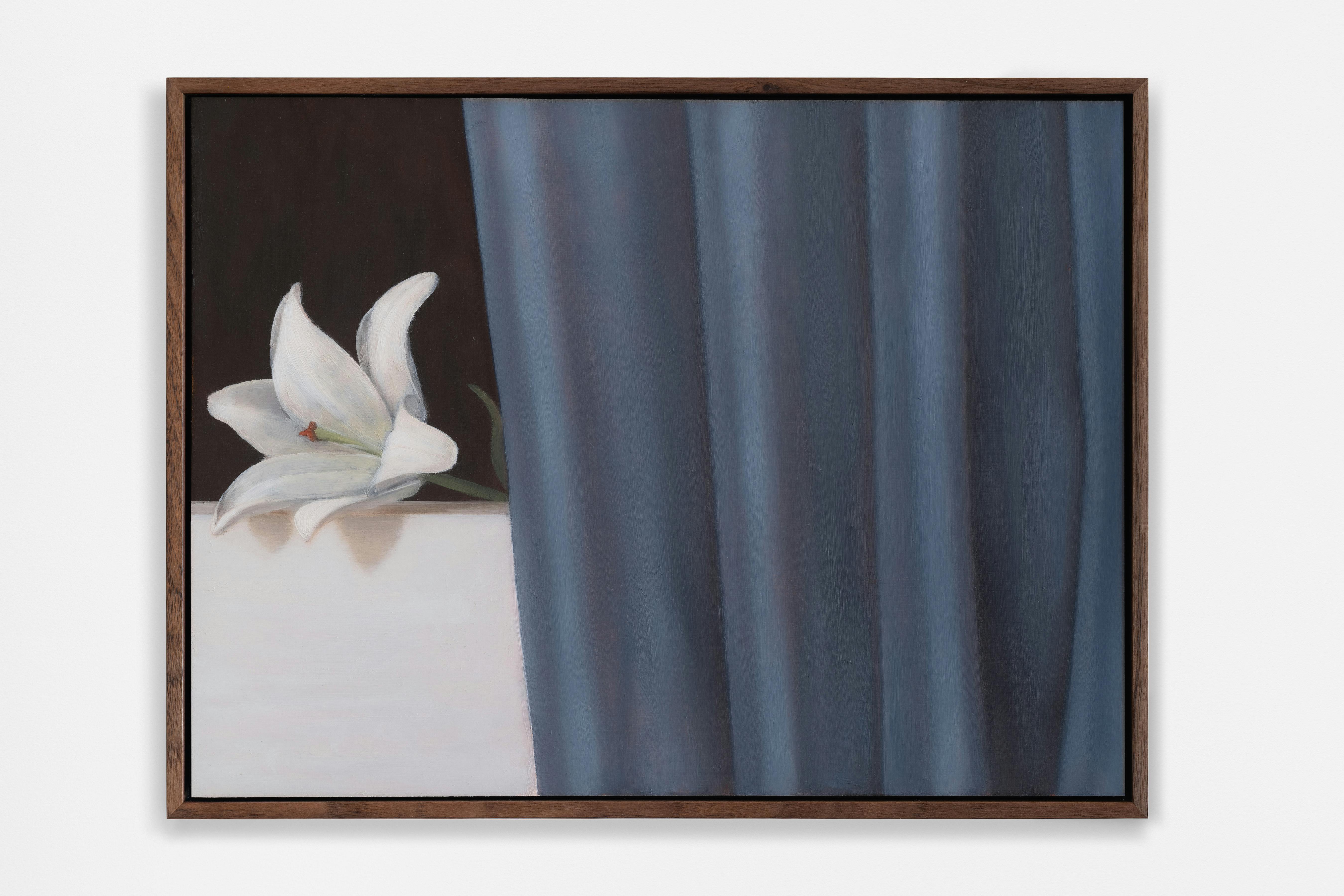
Like the old masters he reveres, Max Xeno Karnig’s paintings subtly mutate, but often return to the same repeated subjects. Various fruits and glimpses of curtains reappear across his exhibitions, their scrupulous detail drawing parallels to the way Dutch painters rendered chiaroscuro in their still lifes. But Max usurps tradition with a ubiquitous tongue-in-cheek spin, bringing in fictional film characters or Hollywood celebrities to alter their reading. For ‘At a Distance’, we witness all of his usual traits, as a lily flower and exotic lemon loom from behind a blue curtain, broken up by a singular circular visage of Tadzio, the young protagonist from Thomas Mann’s ‘Death in Venice’.
Tadzio is a subject Max paints again and again, his innocent beauty portrayed through a close deftness of brushwork. In ‘Death in Venice’ he is the sailor-suited object of desire; here, he breaks the seemingly singular passage of time, conspicuously watching over the goings-on behind the curtain as it is pulled in and out. Max paints him on wood too, a departure from the flatter sheen he achieves on aluminium surfaces. In each painting you see the influence of old masters – the lily petals are rendered in lead white, a favourite of Rembrandt's for obtaining various hues in front; and the diffused softness of skin in his visage of Tadzio, draws from the style of .
The curtains seen in four of the panels are akin to those would repeatedly paint throughout his career. Writer Roger Shattuck wrote that ‘Magritte’s partially drawn curtains imply a great skepticism about the very act of sight.’ Their inclusion in Max’s painting suggests an impending drama, or the closing of a scene. Hidden metaphors emerge across every of his paintings, as Tadzio’s youthful spirit is paralleled with lilies, so often given to console after the death of a loved one. He treats shadow with the same close dexterity as he does with his subjects, the folds of curtain or murmur of a petal similar to the pronounced shadow in paintings. The stage sets he renders are reminiscent of still life paintings of vegetables, the defined ledges appearing like shelves in cabinet of curiosity paintings of the 16th century.
But with all the art history he conjures into these small panels, Max’s paintings have a contemporary vitality which brings them into the present. Magritte wrote that ‘we only perceive the world behind a curtain of semblance’. For Max, the curtain is a prop for detaching his subjects from their context, as they peer from behind, but at a distance to never be quite out of sight.
References
1
2
3
4